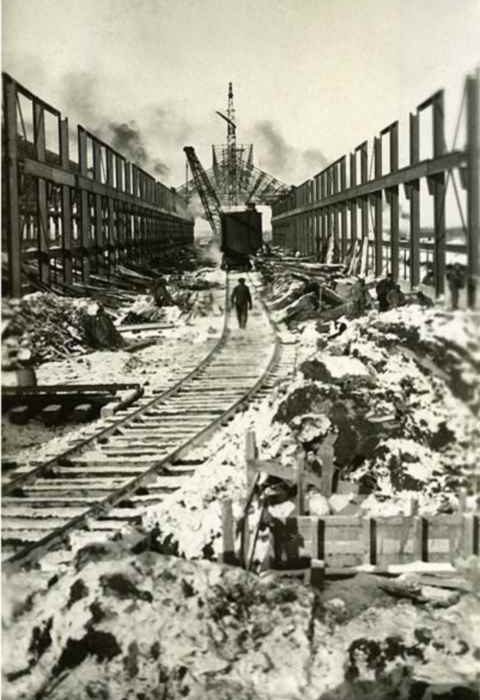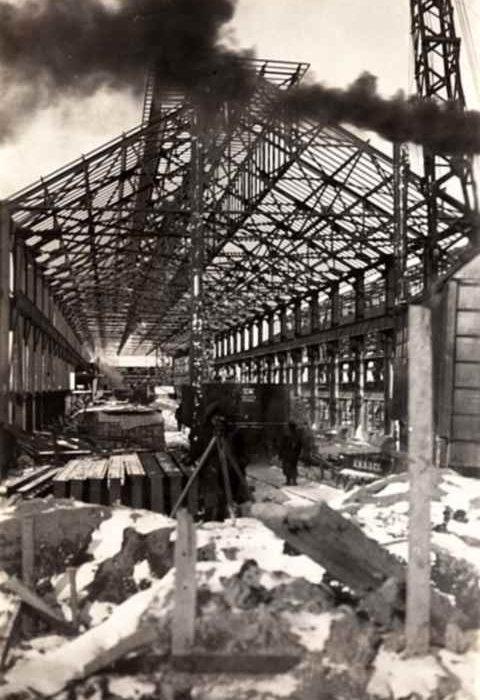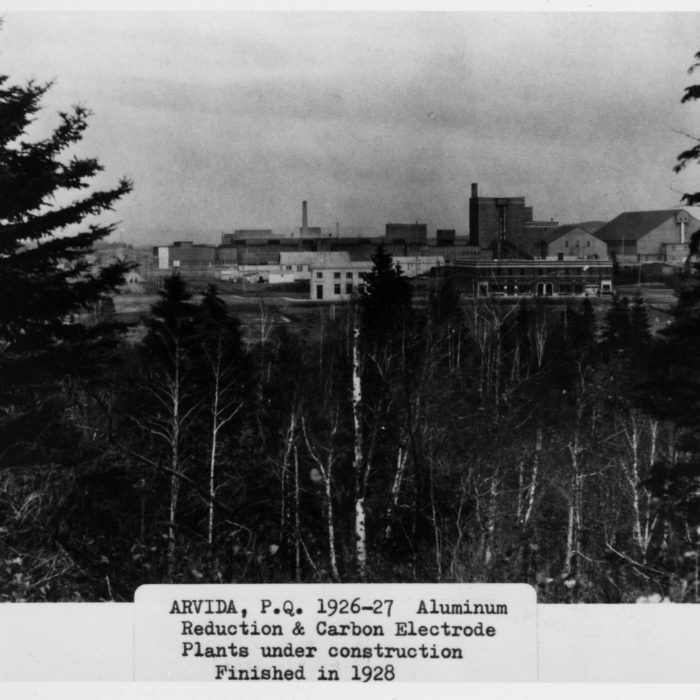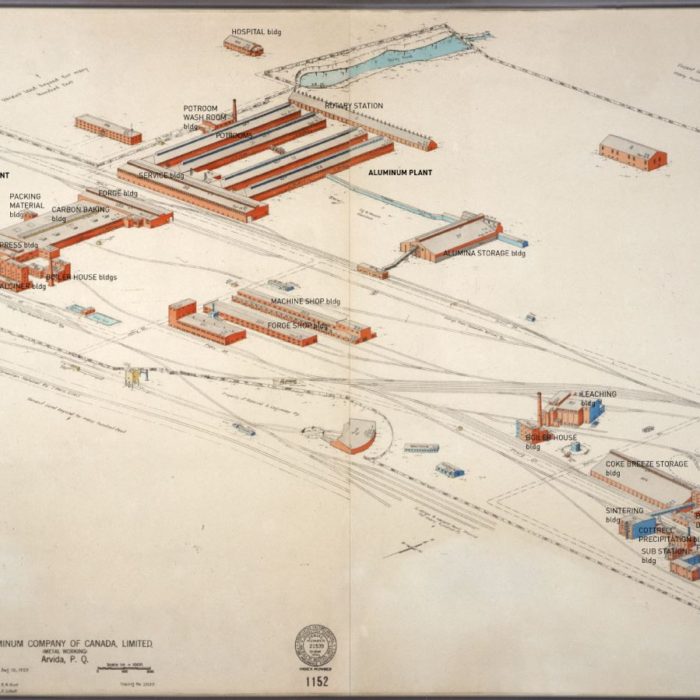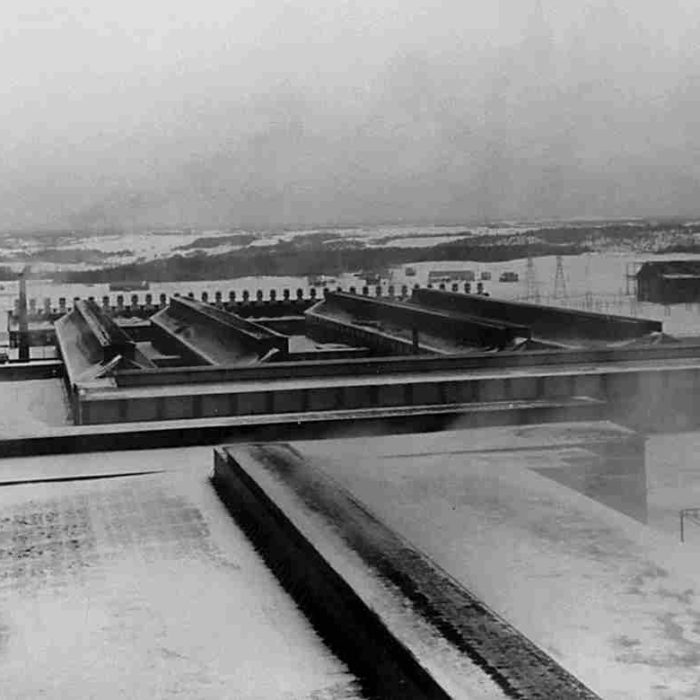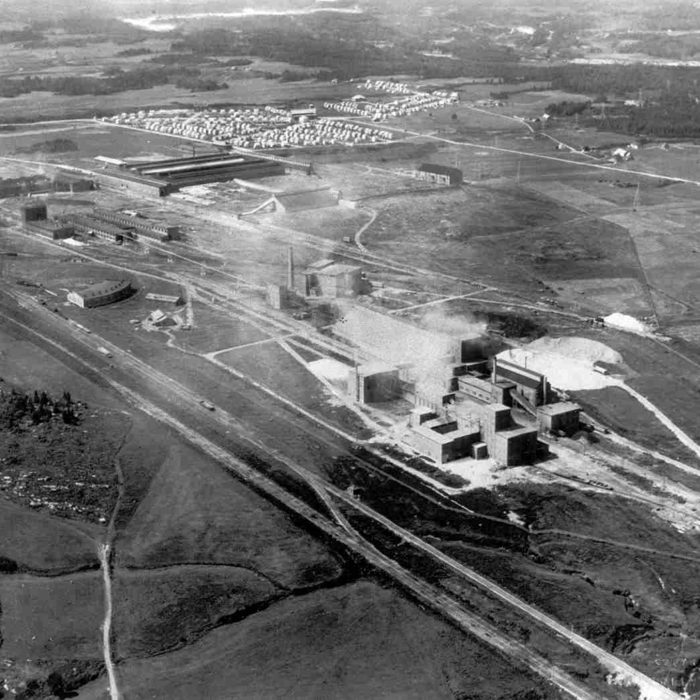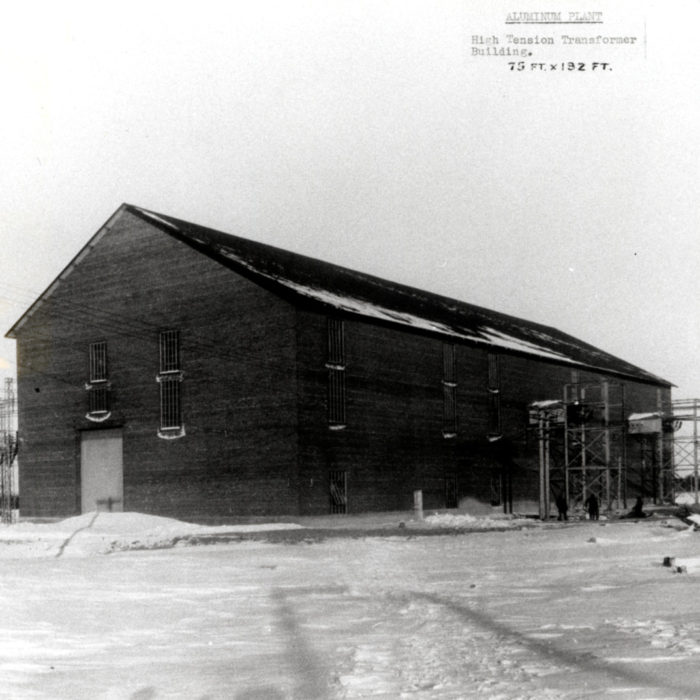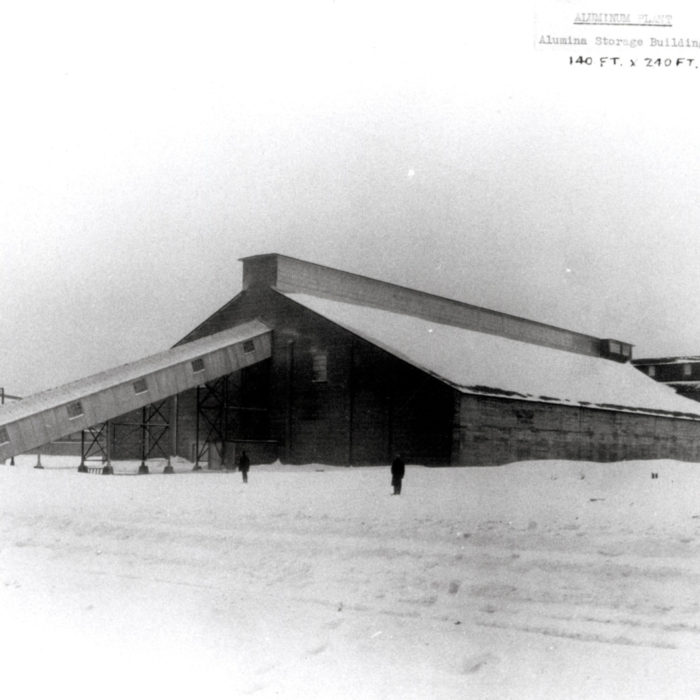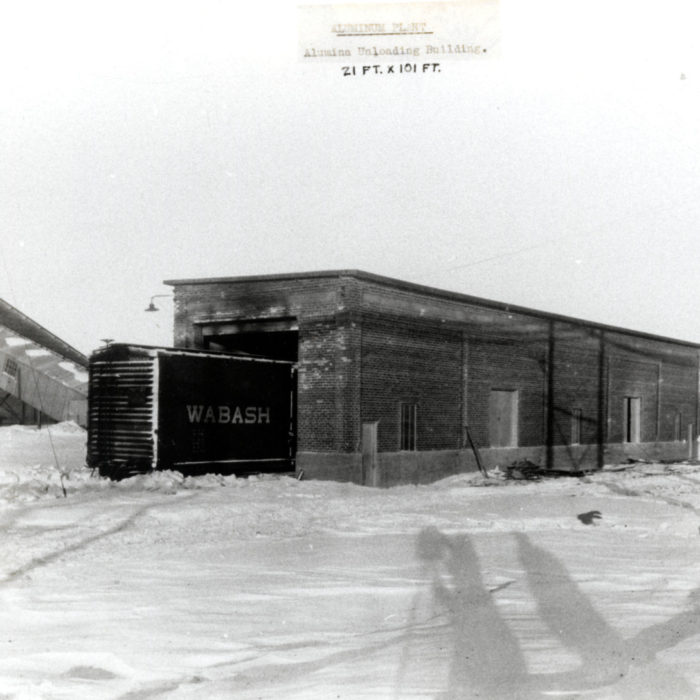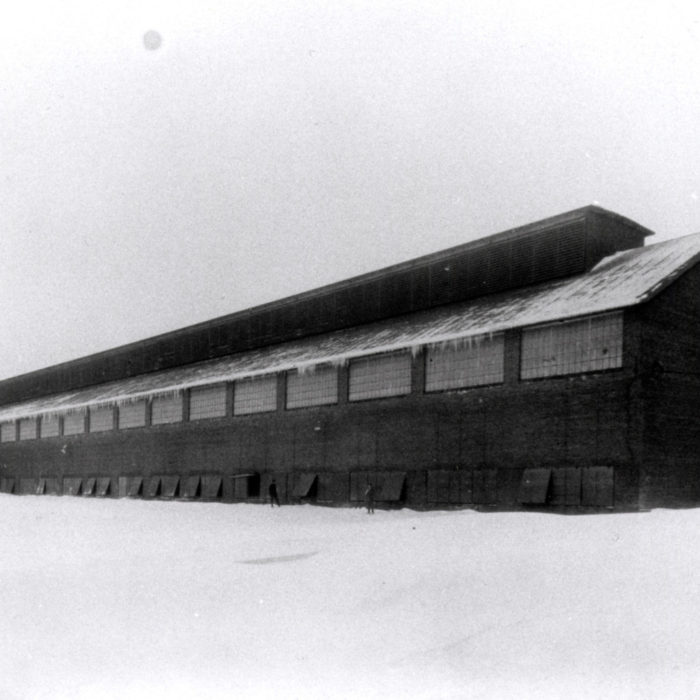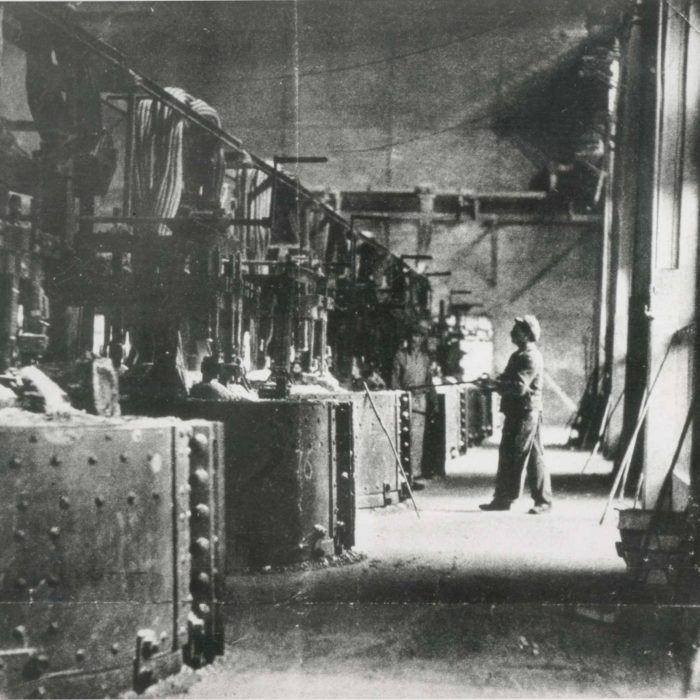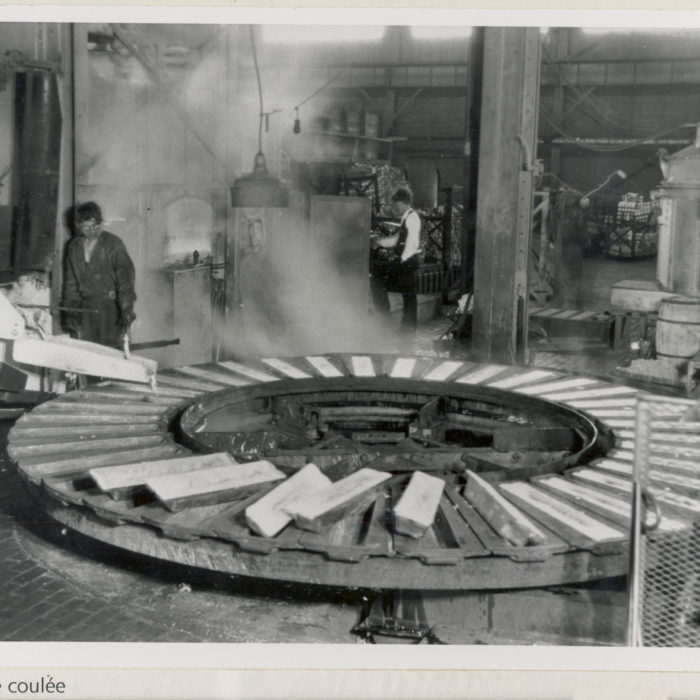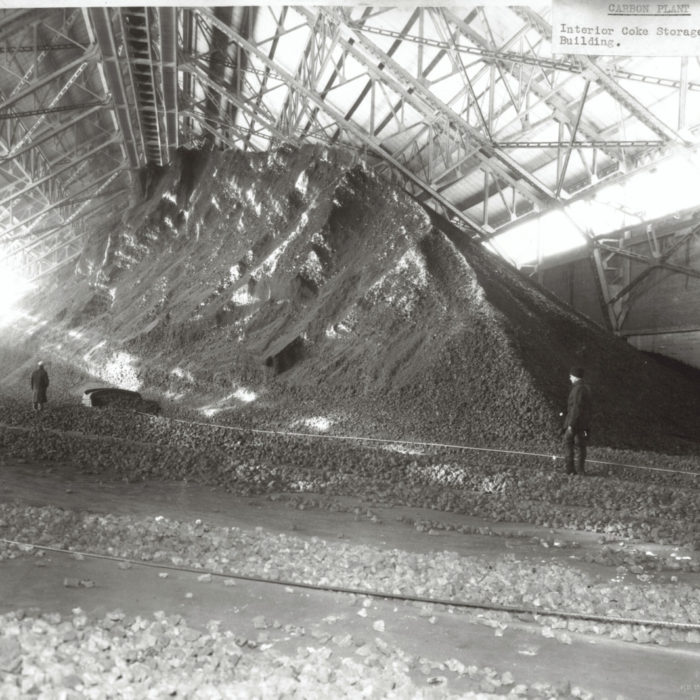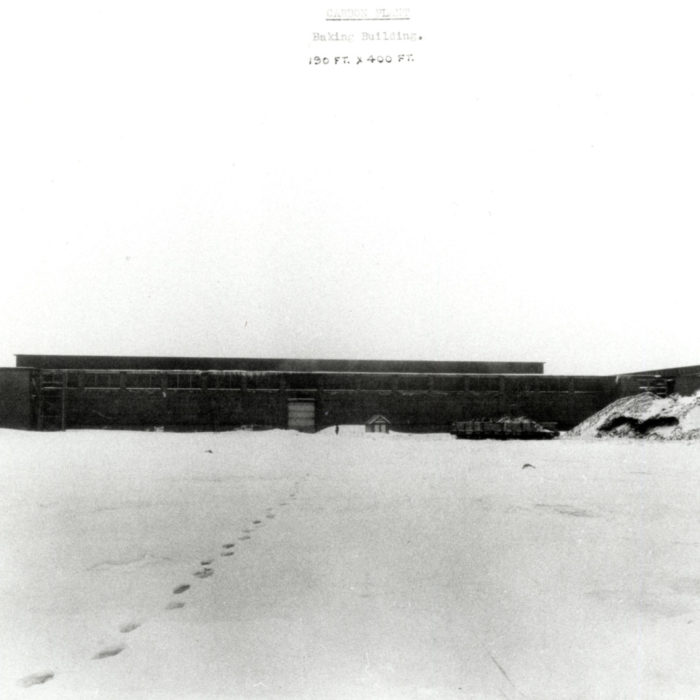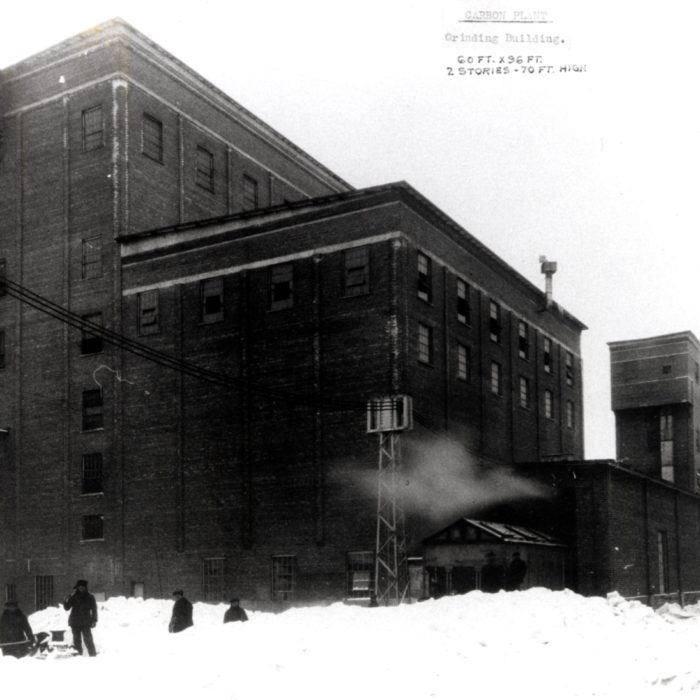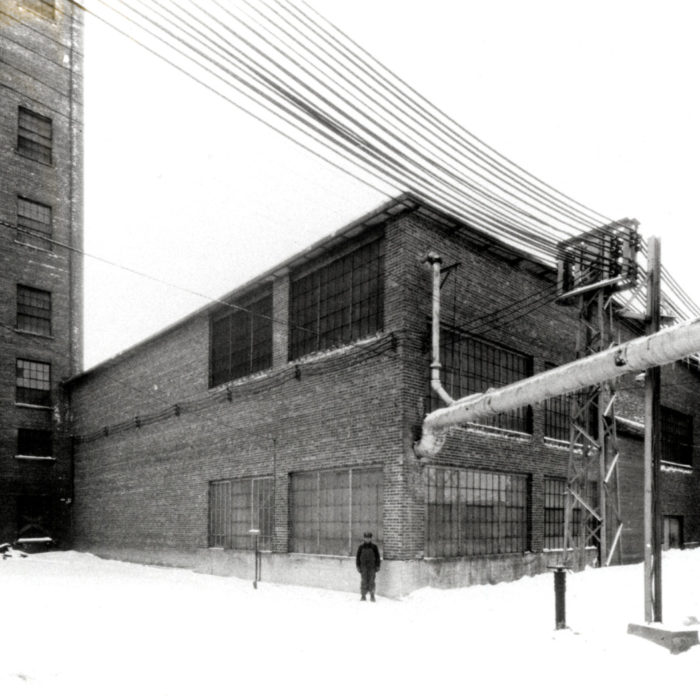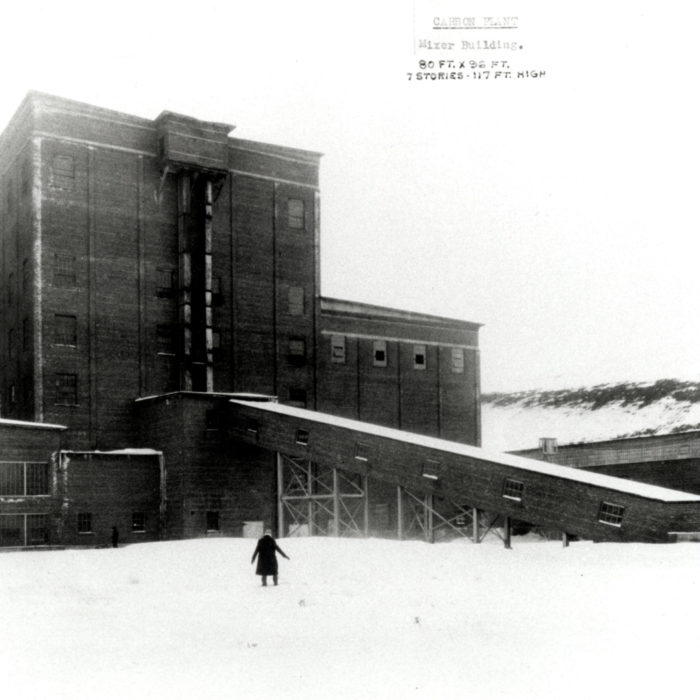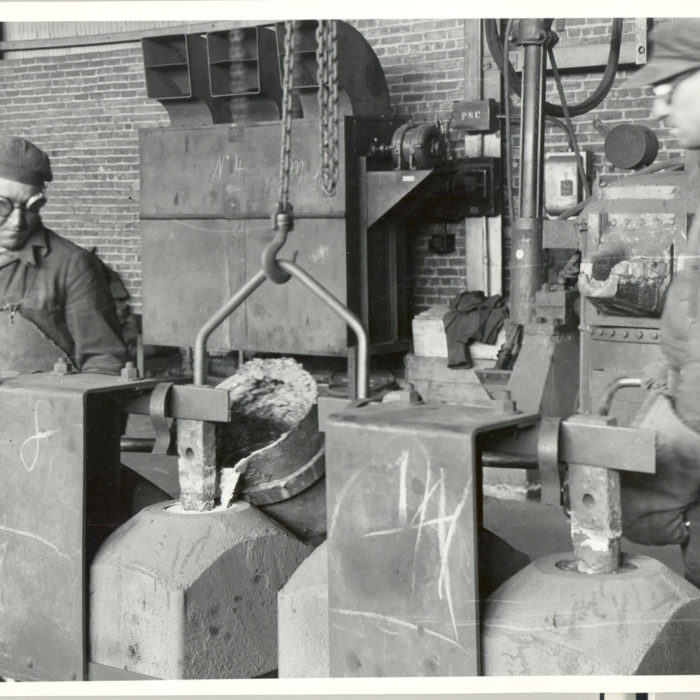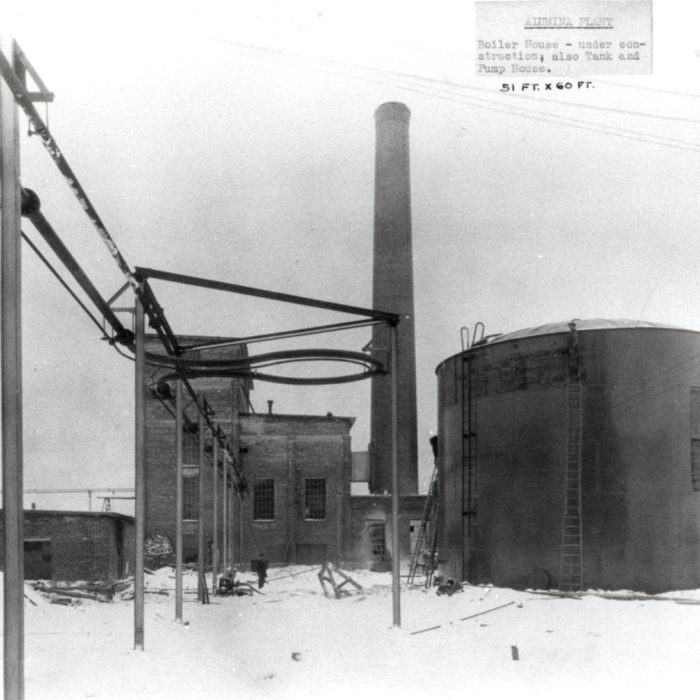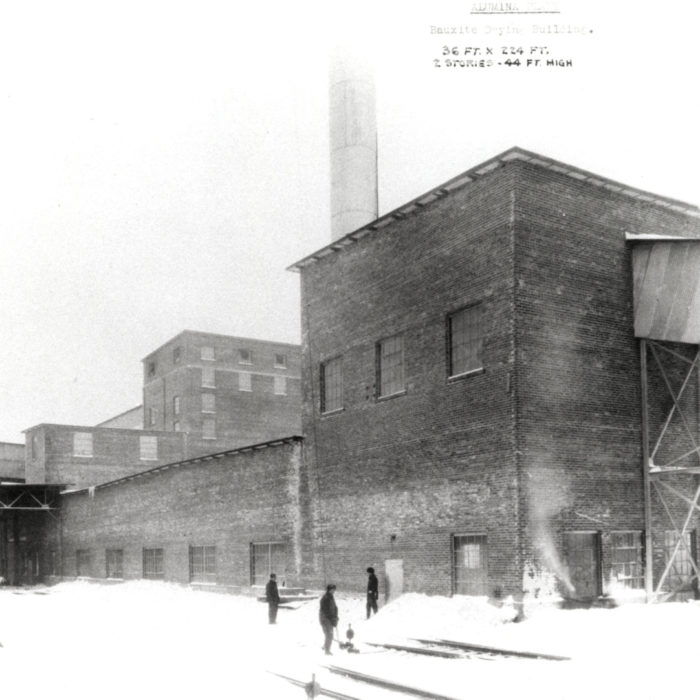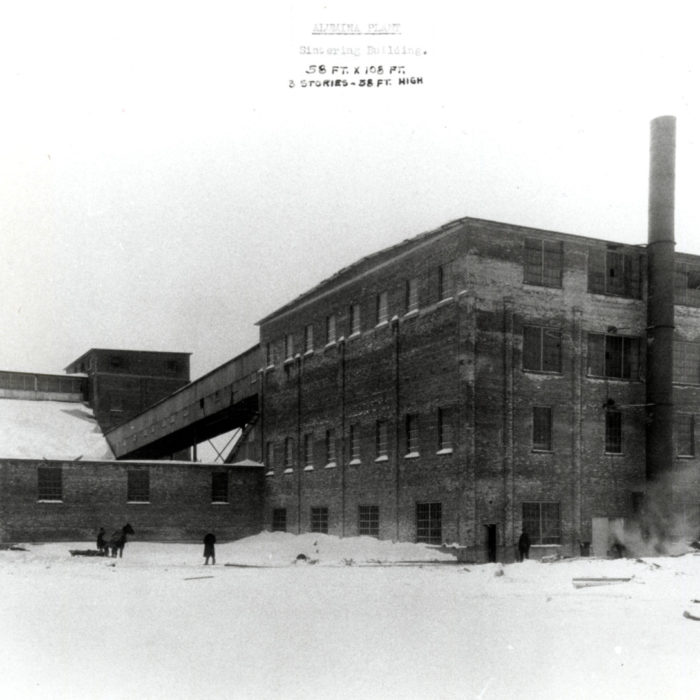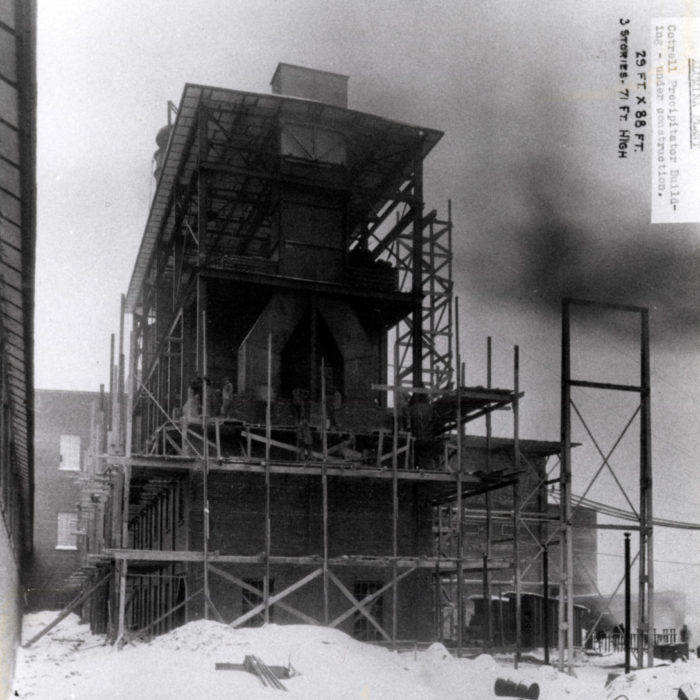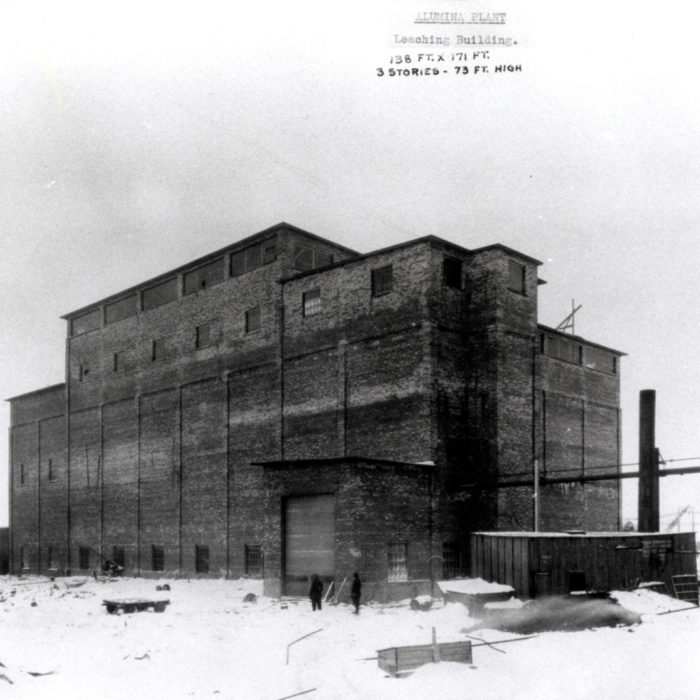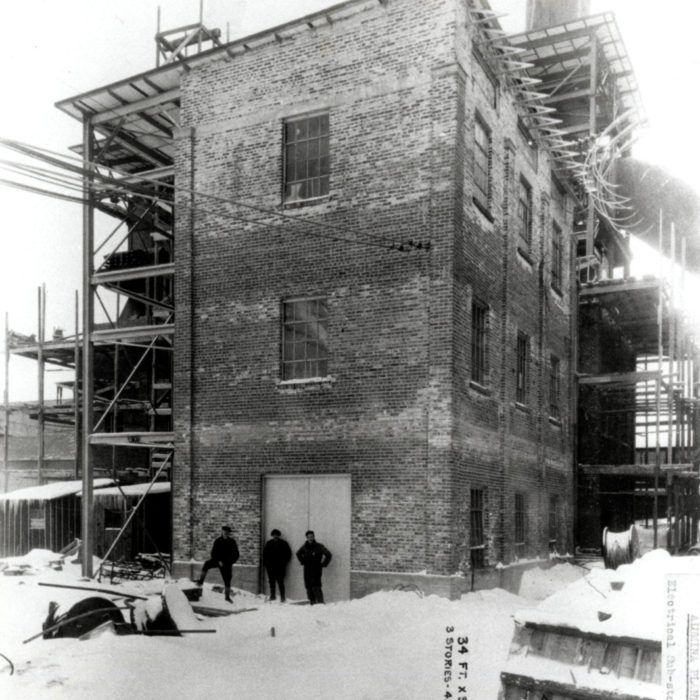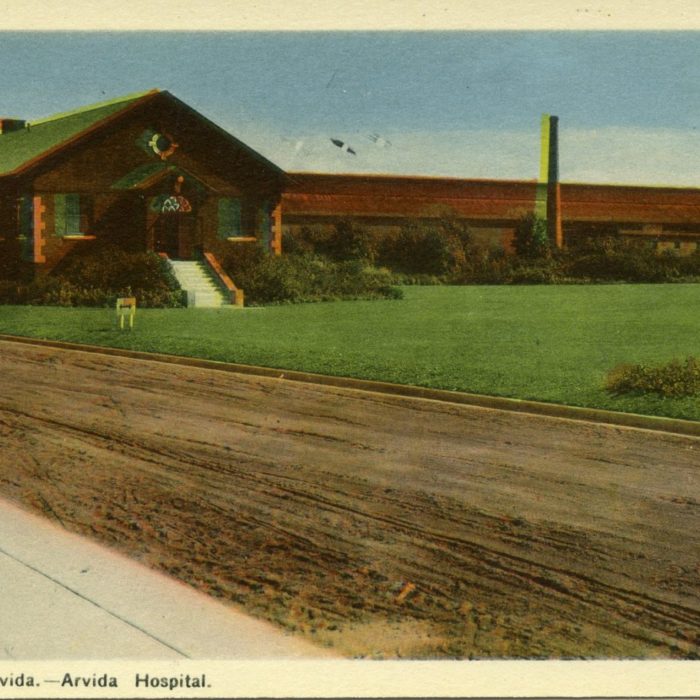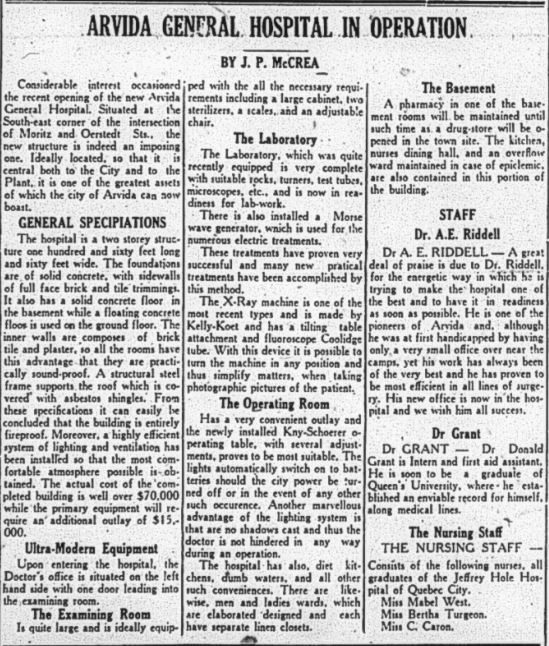A vast industrial complex
A rapid construction
The end of July 1925 is marked by the arrival of the first Alcoa employees on the site of Arvida in order to begin work. The material required for construction is transported by train, at the rate of 15 to 20 cars a day. Quickly, temporary camps were set up to house the workers. Workers arrive at the rate of 50 per day and, by September, the smelter is under construction. Work proceeds rapidly as the equipment is delivered directly to the central workshop, located on the factory site, where everything is prepared according to plan. On 10 September 1925, excavation begins for the foundations of Potroom 21. This marks the beginning of the plant’s construction. In less than two years, more than thirty factory buildings are under construction. On 27 July 1926, the first aluminum ingot was cast.
The world’s first integrated aluminum plant!
Aluminum is produced by two fundamental processes: first the transformation of bauxite into alumina, and then the electrolysis of alumina to aluminum. For Alcoa, Arvida represents an opportunity to take advantage of the research carried out in their laboratories since the 1920s. That is to use local electricity available at low cost thanks to the network of hydroelectric power stations, as well as the dry process using anorthosite mineral available in the Saguenay-Lac-Saint-Jean area.
As such, a colossal construction site is set up, much larger than that of the Shawinigan smelter, built in 1899. The Arvida aluminum complex includes a smelter, a dry refining plant, and an electrode plant. It is the largest aluminum complex in the world. The first two potrooms begin production in 1926, followed by the other two in 1927. The latter were first supplied with alumina from East St. Louis, Illinois, pending the construction of the refining plant. Started in March 1927, the dry-refining plant produced alumina beginning on 19 May 1928. At first the plant was supplied with bauxite mainly from South America. Afterwards, the anorthosite contained in the regional soil replaces bauxite in the alumina production process. The 1930s are marked by the return of bauxite and the gradual discontinuation of the dry process for refining. The refining plant is subsequently converted to the Bayer process.
Aluminum in Arvida
The smelter
One of the essential processes in the manufacture of aluminum is the electrolysis of alumina to aluminum. This step occurs in carbon-lined steel pots. A high voltage electric current passes from the anode, through a mixture of cryolite and alumina, to the pot’s lining, i.e. the carbon cathode. The alumina reacts with the anode, forming aluminum. The latter is deposited at the bottom of the pot.
Initially pots using pre-baked anodes are used in Arvida. The anodes are baked in advance in electric furnaces, and installed subsequently in the pots. A few years later, Söderberg pots are introduced, using a technology developed in Norway. These use unbaked anodes.
As a central figure of the foundry, the task of the potline worker is to ensure the stability of the electrolysis process by monitoring the voltage, adding alumina and adjusting the anodes. In addition, he must break the solid crust that forms on the surface of the pots. This task exposes the potline worker to harsh working conditions. Several other occupations requiring specialised and non-specialised workers are necessary for the smooth functioning of the smelter:
- crane operators;
- anode changers;
- stud installers and pullers;
- electricians.
The carbon plant
Aluminum is produced by a process known as electrolysis. In this continuous process, the electrodes are consumed and must be replaced constantly since about three quarters of a ton of electrodes are used for each tonne of aluminum produced. The electrode plant is of great importance. The manufacture of electrodes consists of calcining coke, grinding it and mixing it with hot pitch then pressing the mixture into molds and baking it in electric furnaces. Here are some trades required for the manufacture of electrodes:
- calcining furnace operator;
- furnace loaders and unloaders;
- grinding mill operators;
- scale operators;
- mixer operators;
- stud installers;
- furnace operators;
- crane operators.
The alumina plant
The first step in the manufacture of aluminum, the refining plant serves to filter the impurities contained in the bauxite in order to produce alumina. Perfecting the process developed by Charles Martin Hall, Alcoa builds a refining plant using the dry process. Thus, the dried and ground bauxite is mixed with coke and then heated to high temperature. The heat reduces the ferrous impurities, which makes it possible to collect the alumina by precipitation. However, the results remain variable since titanium cannot be eliminated. The dry process is abandoned in favour of the Bayer process. Discovered by the chemist Karl Josef Bayer, this process consists of mixing the bauxite with caustic soda in a high-pressure high-temperature autoclave. The resulting product is then separated from the impurities by filtration and precipitation, then separated, washed and calcined. The product obtained at the end of the cycle is white alumina powder. Here are some trades found in the refining plant:
- furnace operators;
- furnace loaders and unloaders.
The managers of Aluminum Limited and Arvida Works
Office building
Office building
The office building.
Sir William Price Heritage Centre. DSCN6596.
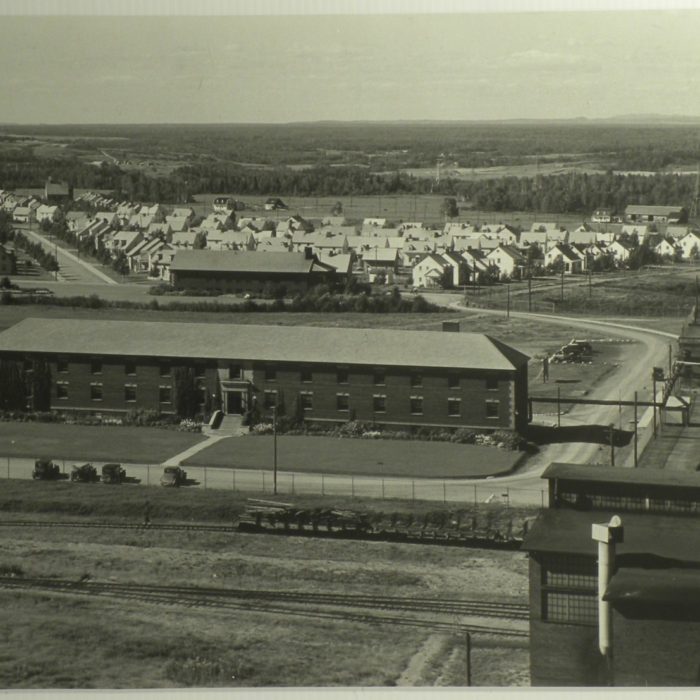
Harold R. Wake
Harold R. Wake
Harold R. Wake, real estate manager.
Rio Tinto. PORT-30-11.
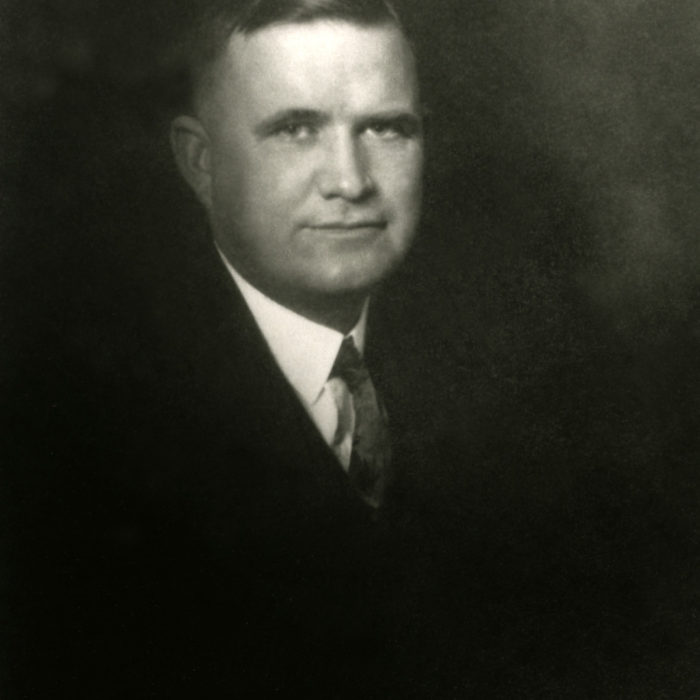
J. B. White
J. B. White
J. B. White, potroom manager (standing), at the Saguenay Aluminium Pioneers Club meeting, taking place at the Saguenay Inn, December 2, 1950.
Saguenay Historical Society. P2-S7-P03731-2.
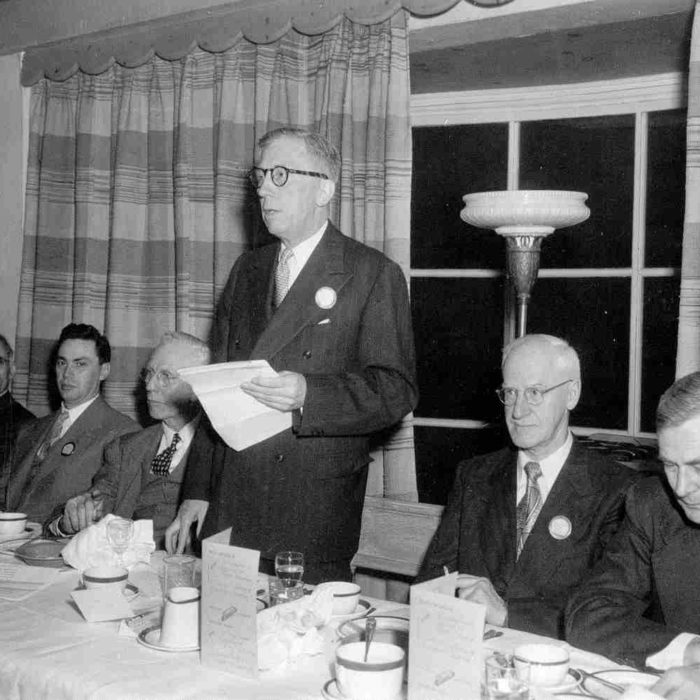
Ray Edwin Powell
Ray Edwin Powell
Ray Edwin Powell, president, circa 1942.
Harmonie Saguenay.
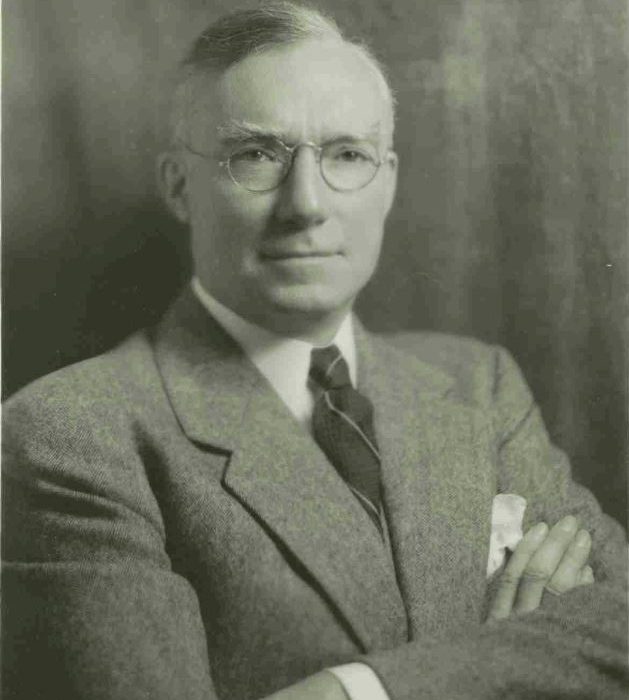
A. W. Whitaker
A. W. Whitaker
On the left, A. W. Whitaker, general manager.
Harmonie Saguenay.
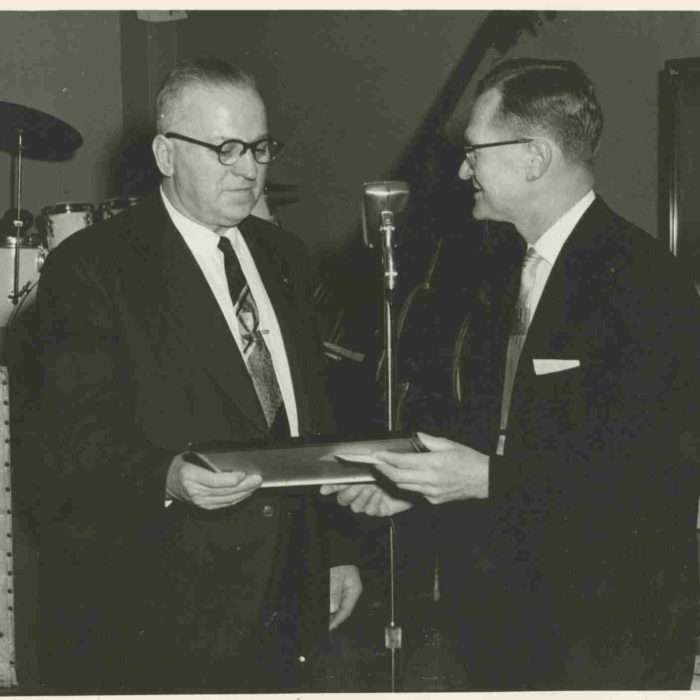
Aluminum Limited’s board of directors
In order to separate its US activities from its international operations, Alcoa creates Aluminum Limited on 4 June 1928. To it, Alcoa transferred ownership of 34 companies, the largest being the Aluminium Company of Canada. Arthur Vining Davis’ brother, Edward K. Davis, is head of the board of directors. The board is also composed of Earl Blough (vice-president), George O. Morgan (treasurer), Jarvis H. Alger (secretary), Leighton McCarthy, J.F. Van Lane, Aimé Geoffrion and John Herbert Price (president of Price Brothers and Company).
Aluminum Limited’s senior management
The choice of senior management then becomes crucial in order to start sales and organise international business. Thus, Edward K. Davis chooses his main collaborators. Comprised of men having solid experience at Alcoa, the senior management of Aluminum Limited includes Earl Blough (head of technology), Elmer G. MacDowell (chief sales manager), Ray E. Powell (fabrication manager), Jarvis H. Alger (first secretary) and George O. Morgan (first treasurer and chief financial officer).
Management positions in Arvida Works
The start-up of a new aluminum smelter requires experienced personnel to ensure its smooth operation. Consequently, Arvida’s management personnel come primarily from Alcoa’s other North American operations. Here are some leadership positions in Arvida:
- power department director;
- camp director;
- property director;
- electrode plant director;
- pot lining service director;
- purchasing director ;
- technical director;
- personnel manager;
- warehouse manager;
- transport department manager;
- payroll clerk.
Difficult working conditions
Working conditions at the Arvida aluminum smelter are described by both managers and workers as being difficult. In addition to long hours of work and the sometimes unhealthy environment, the risk of accidents is omnipresent. In 1928, the Aluminum Company of Canada launches a safety campaign. In the 1930s, courses are designed and offered in view of reducing the risk of accidents.
Some tasks are subject to particularly difficult conditions, such as the potroom workers, who are exposed to intense heat and gas fumes. Workers in the alumina plant are exposed to vapours and odours of chemical products.
Most employees are hourly-paid, and work 8 hours a day, from Monday to Saturday. However, the potrooms, which are in operation 24 hours a day seven days a week, require a different system. Work teams are divided into three 8-hour shifts. Wages vary according to the various occupations. Most often, wages are similar to those in Quebec City, but lower than those in Montreal.
In July 1937, the National Catholic Union of the Aluminum Industry of Arvida was founded. The first collective agreement gives union members a salary increase as well as one vacation day per year of service. This is the first step towards improving working conditions. The union is still active today, under the name of Syndicat National des Employés de l’Aluminium d’Arvida.

